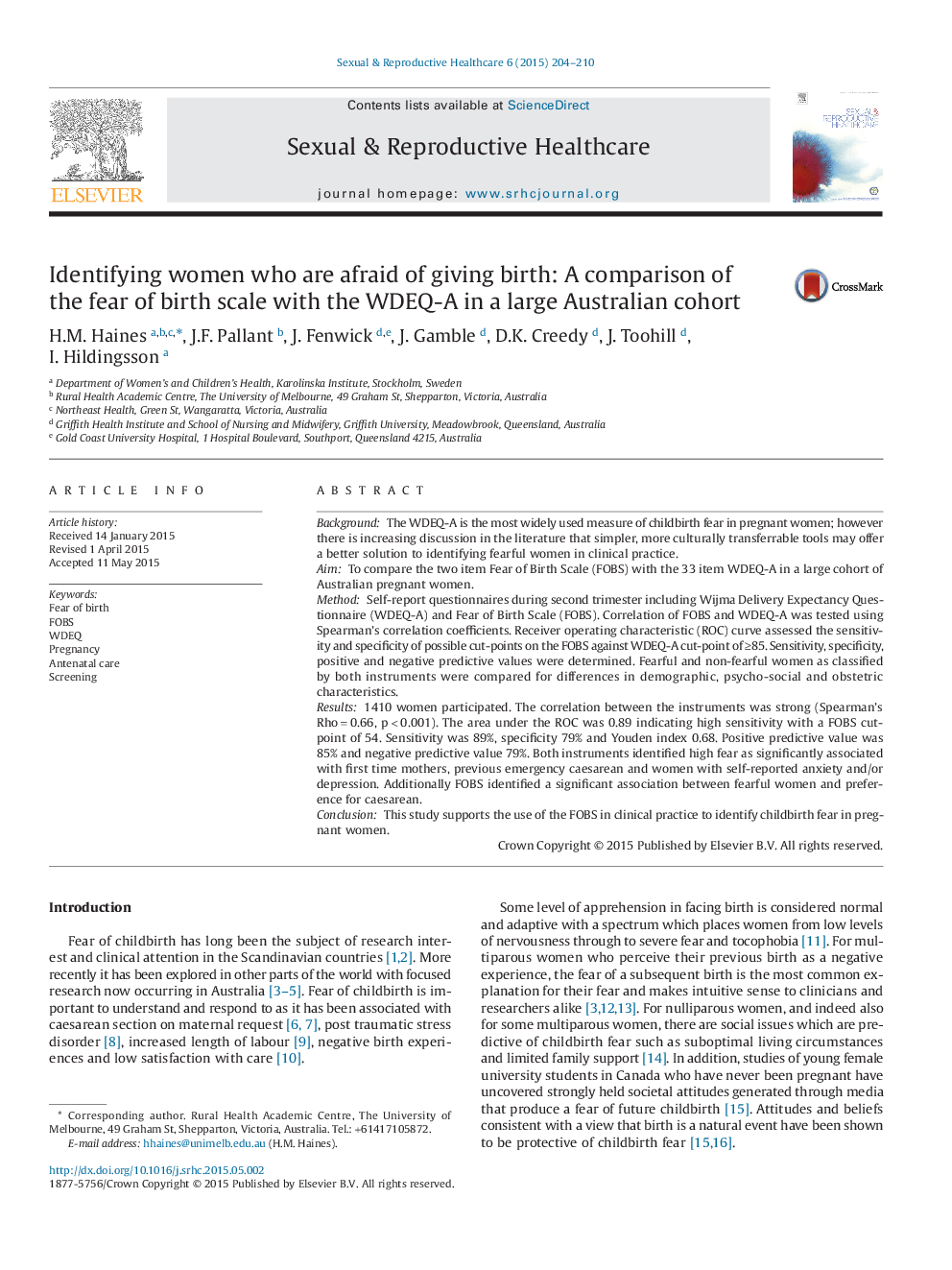| کد مقاله | کد نشریه | سال انتشار | مقاله انگلیسی | نسخه تمام متن |
|---|---|---|---|---|
| 2635739 | 1137351 | 2015 | 7 صفحه PDF | دانلود رایگان |

• The FOBS and WDEQ-A correlate strongly with FOBS showing high sensitivity and specificity in detecting childbirth fear.
• A two item scale to measure fear of birth has greater clinical utility than a 33 item scale.
• Childbirth fear as measured by both instruments was significantly associated with women who self-reported anxiety and/or depression.
BackgroundThe WDEQ-A is the most widely used measure of childbirth fear in pregnant women; however there is increasing discussion in the literature that simpler, more culturally transferrable tools may offer a better solution to identifying fearful women in clinical practice.AimTo compare the two item Fear of Birth Scale (FOBS) with the 33 item WDEQ-A in a large cohort of Australian pregnant women.MethodSelf-report questionnaires during second trimester including Wijma Delivery Expectancy Questionnaire (WDEQ-A) and Fear of Birth Scale (FOBS). Correlation of FOBS and WDEQ-A was tested using Spearman's correlation coefficients. Receiver operating characteristic (ROC) curve assessed the sensitivity and specificity of possible cut-points on the FOBS against WDEQ-A cut-point of ≥85. Sensitivity, specificity, positive and negative predictive values were determined. Fearful and non-fearful women as classified by both instruments were compared for differences in demographic, psycho-social and obstetric characteristics.Results1410 women participated. The correlation between the instruments was strong (Spearman's Rho = 0.66, p < 0.001). The area under the ROC was 0.89 indicating high sensitivity with a FOBS cut-point of 54. Sensitivity was 89%, specificity 79% and Youden index 0.68. Positive predictive value was 85% and negative predictive value 79%. Both instruments identified high fear as significantly associated with first time mothers, previous emergency caesarean and women with self-reported anxiety and/or depression. Additionally FOBS identified a significant association between fearful women and preference for caesarean.ConclusionThis study supports the use of the FOBS in clinical practice to identify childbirth fear in pregnant women.
Journal: Sexual & Reproductive Healthcare - Volume 6, Issue 4, December 2015, Pages 204–210